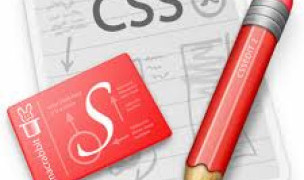 10 Terms
10 TermsHome > Terms > English, UK (UE) > Facsimile (FAX)
Facsimile (FAX)
A form of telegraphy for the transmission of fixed images, with or without half-tones, with a view to their reproduction in a permanent form. In this definition the term telegraphy has the same general meaning as defined in the Convention. 2. The process by which fixed graphic images, such as printed text and pictures, are scanned, and the information converted into electrical signals that may be transmitted over a telecommunications system and used to create a copy of the original, or an image so produced. Note 1: Wirephoto and telephoto are facsimile via wire circuits. Radiophoto is facsimile via radio. Note 2: Technology now exists that permits the transmission and reception of facsimile data to or from a computer without requiring hard copy at either end. Note 3: Current facsimile systems are designated and defined as follows: Group 1 Facsimile: The mode of black and white facsimile operation, defined in ITU-T Recommendation T. 2, that uses double sideband modulation without any special measures to compress the bandwidth. Note 1: A 216 × 279-mm document, i.e., an 8½ × 11-inch document, may be transmitted in approximately 6 minutes via a telephone-type circuit. Additional modes in this group may be designed to operate at a lower resolution suitable for the transmission of 216 × 279-mm documents in 3 to 6 minutes. Note 2: The CCITT frequencies used are 1300 Hz for white and 2300 Hz for black. The North American standard is 1500 Hz for white and either 2300 or 2400 Hz for black. Group 2 Facsimile: The mode of black and white facsimile operation, defined in ITU-T Recommendation T. 3, that accomplishes bandwidth compression by using encoding and vestigial sideband, but excludes processing of the document signal to reduce redundancy. Note: A 216 × 279-mm document, i.e., an 8½ × 11-inch document, may be transmitted in approximately 3 minutes using a 2100-Hz AM/PM/VSB, over a telephone-type circuit. Group 3 Facsimile: The mode of black and white facsimile operation, defined in ITU-T Recommendation T. 4, that incorporates means for reducing the redundant information in the signal by using a one-dimensional run-length coding scheme prior to the modulation process. Note 1: A 216 × 279-mm document, i.e., an 8½ × 11-inch document, may be transmitted in approximately 1 minute or less over a telephone-type circuit with twice the Group 2 horizontal resolution. The vertical resolution may also be doubled. Note 2: Group 3 Facsimile machines have integral digital modems. Note 3: An optional two-dimensional bandwidth compression scheme is also defined within the Group 3 Facsimile Recommendation. Note 4: When any CCITT or CCIR Recommendation is modified by the ITU-T, the modified document is designated as an ITU-T Recommendation. Group 3C Facsimile: The Group 3 digital mode of facsimile operation defined in ITU-T Recommendation T. 30. Note: Group 3C is also referred to as Group 3 Option C or as Group 3-64 kb/s. Group 4 Facsimile: The mode of black and white facsimile operation defined in ITU-T Recommendation T. 563 and CCITT Recommendation T. 6. Note 1: Group 4 Facsimile uses bandwidth compression techniques to transmit, essentially without errors, a 216 × 279-mm document, i.e., an 8½ × 11-inch document, at a nominal resolution of 8 lines/mm in less than 1 minute over a public data network voice-grade circuit. Note 2: When any CCITT or CCIR Recommendation is modified by the ITU-T, the modified document is designated as an ITU-T Recommendation. Type I Facsimile: The mode of digital black and white facsimile operation defined in MIL-STD-188-161 used for transmission of bi-level information (e. G. , text and simple graphics. ) Note: Type I facsimile is interoperable with the black-and-white facsimile mode of STANAG 5000 and is designed for operation over noisy communications links such as tactical channels. Type II Facsimile: The mode of gray-scale facsimile operation defined in MIL-STD-188-161 used for transmission of multi-level information (e. G. , photographs. ) Note: Type II facsimile is interoperable with the black-and-white facsimile mode of Type I or STANAG 5000 equipment and is designed for operation over noisy communications links such as tactical channels.
- Part of Speech: noun
- Synonym(s):
- Blossary:
- Industry/Domain: Telecommunications
- Category: General telecom
- Company: ATIS
- Product:
- Acronym-Abbreviation:
Other Languages:
Member comments
Terms in the News
Featured Terms
God particle
Also called Higgs boson, it's a yet to be discovered particle that gives mass matter when sufficient energy is imparted to the Higgs Field. The God ...
Contributor
Featured blossaries
Browers Terms By Category
- Manufactured fibers(1805)
- Fabric(212)
- Sewing(201)
- Fibers & stitching(53)
Textiles(2271) Terms
- Pesticides(2181)
- Organic fertilizers(10)
- Potassium fertilizers(8)
- Herbicides(5)
- Fungicides(1)
- Insecticides(1)
Agricultural chemicals(2207) Terms
- Clock(712)
- Calendar(26)
Chronometry(738) Terms
- Aeronautics(5992)
- Air traffic control(1257)
- Airport(1242)
- Aircraft(949)
- Aircraft maintenance(888)
- Powerplant(616)





